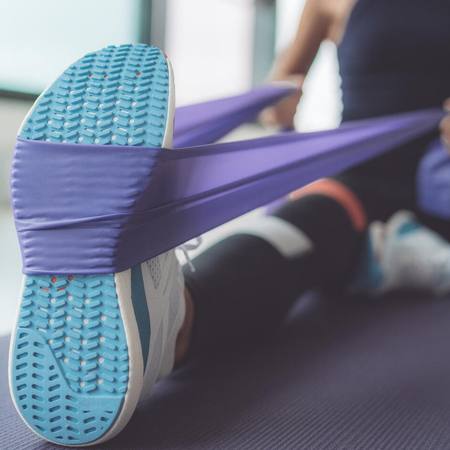-
Health & Wellness
Is It Safe To Manage Mild Leg Swelling at Home or Is It Necessary To See a Doctor First?
May 17, 2013
Dear Mayo Clinic:
For the past couple of weeks my calves have been swollen. They don't hurt, but I definitely notice that my socks are tighter than normal. What could be the cause?
Answer:
There are numerous causes of painless swelling of the legs (peripheral edema). If there are no other symptoms, mild leg swelling is relatively common and easily managed. But peripheral edema is sometimes associated with a more serious underlying disease, so it's important you see your doctor for a thorough exam and accurate diagnosis.
Edema is the result of a buildup of excess fluid in your tissues. Normally, the body maintains a balance of fluids between the network of blood vessels, the lymph system and all of the tissues outside of these vessels. However, if the balance is disturbed, the tiniest blood vessels (capillaries) may leak fluid that builds up in surrounding tissues. The result is edema.
In addition to swelling, other signs and symptoms of edema may include stretched or shiny skin, skin that stays indented after being pressed for at least five seconds, or an increase in abdominal size.
Peripheral edema typically affects both legs. Edema in only one leg may be related to something in that leg or the groin on the same side.
In some instances, edema can affect the lungs and lead to shortness of breath and difficulty breathing, which requires urgent medical care.
A physical exam can help sort out the cause of peripheral edema and help determine if there is a serious underlying condition. Certain blood tests and urinalysis may be done, as well an electrocardiogram, chest X-ray and possibly additional imaging, such as such as an ultrasound of the affected leg or even the pelvis.
Mild edema without symptoms such as shortness of breath, abdominal swelling or high blood pressure usually signals a less worrisome cause. The benign causes can include having consumed more salt than usual, being overweight, standing or sitting for an extended period of time, and your age (older adults are more susceptible to swollen legs).
Sometimes, peripheral edema is a side effect of a drug. Among the many drugs known to cause swelling are calcium channel blockers, corticosteroids, nonsteroidal anti-inflammatory drugs, the anti-seizure drug gabapentin (Neurontin), and certain drugs for diabetes — particularly thiazolidinediones.
Peripheral edema can stem from a number of conditions, notably:
Weak or damaged leg veins — Over time, one-way valves that keep blood moving toward your heart can weaken and stop working properly, allowing fluid to pool in your lower limbs.
Deep vein thrombosis (DVT) — Edema may develop if blood clots form in the deep veins of your leg. Clotting usually affects only one leg and may produce swelling, pain and tenderness.
Congestive heart failure — If one of your heart's lower chambers loses its ability to pump effectively, blood can back up. Right-sided heart failure produces lower limb edema and, if severe enough, can lead to abdominal swelling. If the left side of the heart is affected, shortness of breath with exertion and when lying flat in bed can occur due to fluid in the lungs.
Scarring of the liver (cirrhosis) — Scarring related to end-stage liver disease creates serious obstacles for blood flow through the liver. This results in abdominal swelling and peripheral edema, especially as the liver becomes less capable of producing albumin, one of the proteins that keeps fluid in the blood vessels.
Chronic kidney damage — Damage to tiny, filtering structures (glomeruli) in your kidneys can produce a cascade of changes. These include sodium retention, increased protein in the urine and an abnormally low level of albumin in the blood. Fluid buildup in combination with a low albumin level may produce peripheral edema and swelling, which involves the entire body.
Damaged lymphatic system — The lymphatic system helps clear excess fluid from your tissues. Damage to that system — particularly to lymph nodes in the groin area due to cancer surgery or radiation therapy — may impair normal lymph drainage and result in lower limb swelling.
Tumor — Rarely, leg swelling may be associated with pelvic tumors.
To help prevent fluid retention, your doctor may recommend limiting salt intake. Wearing special compression stockings may help prevent fluid retention in your legs and feet. Mild edema related to prolonged standing or sitting can usually be managed by lying down with the legs elevated for an hour or two a day. Water aerobics or walking in a swimming pool also may help redistribute excess fluids. For more severe peripheral edema, a water pill (diuretic) may be prescribed.
— John Wilkinson, M.D., Family Medicine, Mayo Clinic, Rochester, Minn.
Related Articles







